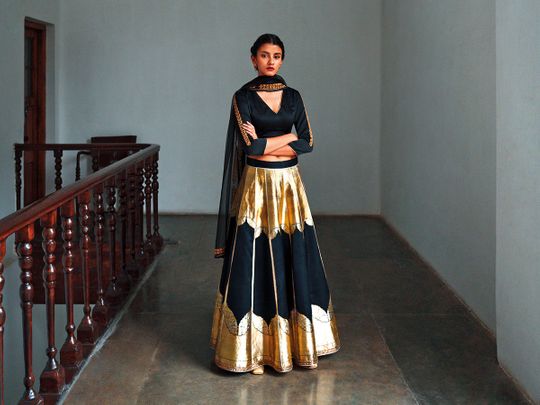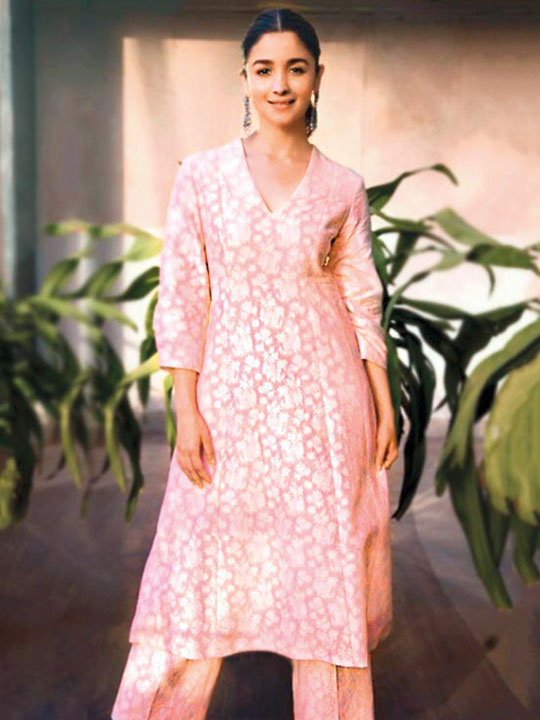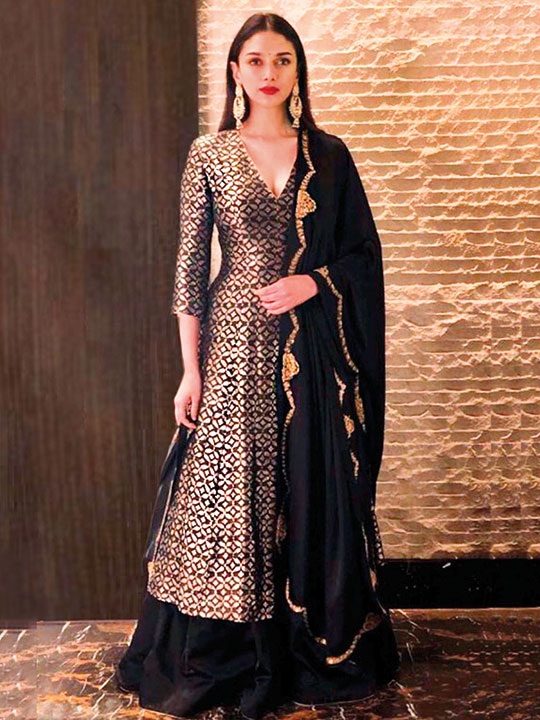
Breaking rules and pushing boundaries is a good thing, claims Indian designer and Raw Mango founder Sanjay Garg. His pragmatic take towards designing seems to have worked wonderfully for this Rajasthan-born designer who takes great pride in his Indian roots and paying it forward to his skilled weavers.
“There is so much left to explore in India that I feel one should move away from trends but instead explore our textiles,” said Garg in an e-mailer interview.
Ahead of his two-day fashion exhibit in Dubai, Garg — who is patronised by Bollywood A-listers — discuss fashion, revival of saris and more...

There is so much left to explore in India that I feel one should move away from trends but instead explore our textiles
Q: What’s the philosophy behind Raw Mango?
A: Raw Mango draws from the colours, philosophies and cultures of India to create a unique voice, questioning place and perspective through design. With roots in craft and community, Raw Mango’s relationship with handloom began in 2008 as an investigation of possibilities. As a design house it continues to create new conversations in textile, culture and politics through a range of saris, garments and objects. Created with karigars [skilled workers] across Rajasthan, Madhya Pradesh, West Bengal and Varanasi, Raw Mango’s designs innovate upon century old skills in pursuit of defining a new aesthetic vocabulary.
Q: Raw Mango seems to take immense pride in going back to Indian roots. What was the kind of resistance you faced when you pitched this idea to those in the fashion industry?
A: It was the general perception that saris should only be restricted to ceremonial occasions like weddings and festivities which I wanted to question — both the garments’ functionality, and what occasion wear stands for in today’s society.

Q: Raw Mango is one of the prime forces behind bringing the sari back on the fashion map. How do you look back on that achievement?
A: I’d like to think of myself as a design thinker and contributor — to keep up and start conversations about not just the niche ‘fashion’ conversation but as ‘design, craft & culture’ that encompasses textile, the human condition, socio-economic realities, design challenges and cultural touch points.
Q: While I love Raw Mango creations, you have to dig deep in your pockets. Have you considered creating a more affordable collection?
A: I believe the value of craftsmanship, customisation and of course handwoven qualities in a product is what really dictates its price point. That being said, I still stock saris worth Rs5,000 among others.
Q. Should India move away from its obsession with couture traditional wedding garments rolled out on fashion weeks and embrace its traditional weaves without expecting it to be ostentatious?
A: There is so much left to explore in India that I feel one should move away from trends but instead explore our textiles that do not come and go year after year but that could serve a purpose, either towards the silhouette or any ornamentation.

Q: What’s the most overrated and underrated fashion trend and why?
A: Trends in general are overrated and they dissolve everything in terms of sustainability and organic fashion.
Q: What kind of a fashion moment are we having in India right now?
A: There has definitely been a shift to a more sustainable and organic approach to fashion where people are becoming more conscious and are choosing to prioritise quality over quantity. It’s not something that should be made to be ‘attractive’ but should be informed as a reflection of the preservation of craftsmanship and promotion of a successful socio-economic and a sustainable environment for all.
Q: Do you think showcasing Bollywood stars as showstoppers or employing known faces as clothes horses diminishes the work done by a fashion designer?
A: The emphasis does shift to the showstopper/Bollywood from the designs as more attention is drawn in through a known face — this has both a negative and positive impact for the designer, it all depends on what he or she chooses to prioritise.
Q: What’s your take on ‘sack-the-stylist’ pages and who according to you is the best dressed in Bollywood. Plus, if you could give one fashion advice to the world, what would it be and why?
A: Fashion or style-op pages are a medium for one to freely express their opinion. They do come with their own set of shortcomings... My advice is to not look at fashion as a trend, but to explore the different ways of how one can have a different voice that speaks of individuality.
Q: Many Indians and stars seem to gravitate towards Western couture wear for formal occasions. Do you think they do so because Indian fashion labels are failing to catch up with them?
A: This applies to not just fashion but food, music, movies and more. It’s because of this perception that we are constantly looking to the West for inspiration and references, when there’s actually so much to explore in our country — be it in textile, art or craft.
Don’t miss it!
When: February 22 and 23
Where: The Edit Dubai, Villa 966, Al Wasl Road
Time: 11am to 7pm
Entry: Free
QUOTE UNQUOTE:
“A white khadi kurta”: Raw Mango founder’s most precious item in his wardrobe.
“I do believe that less is more, and that there’s presence in the absence,” Garg on his take on minimalism.













